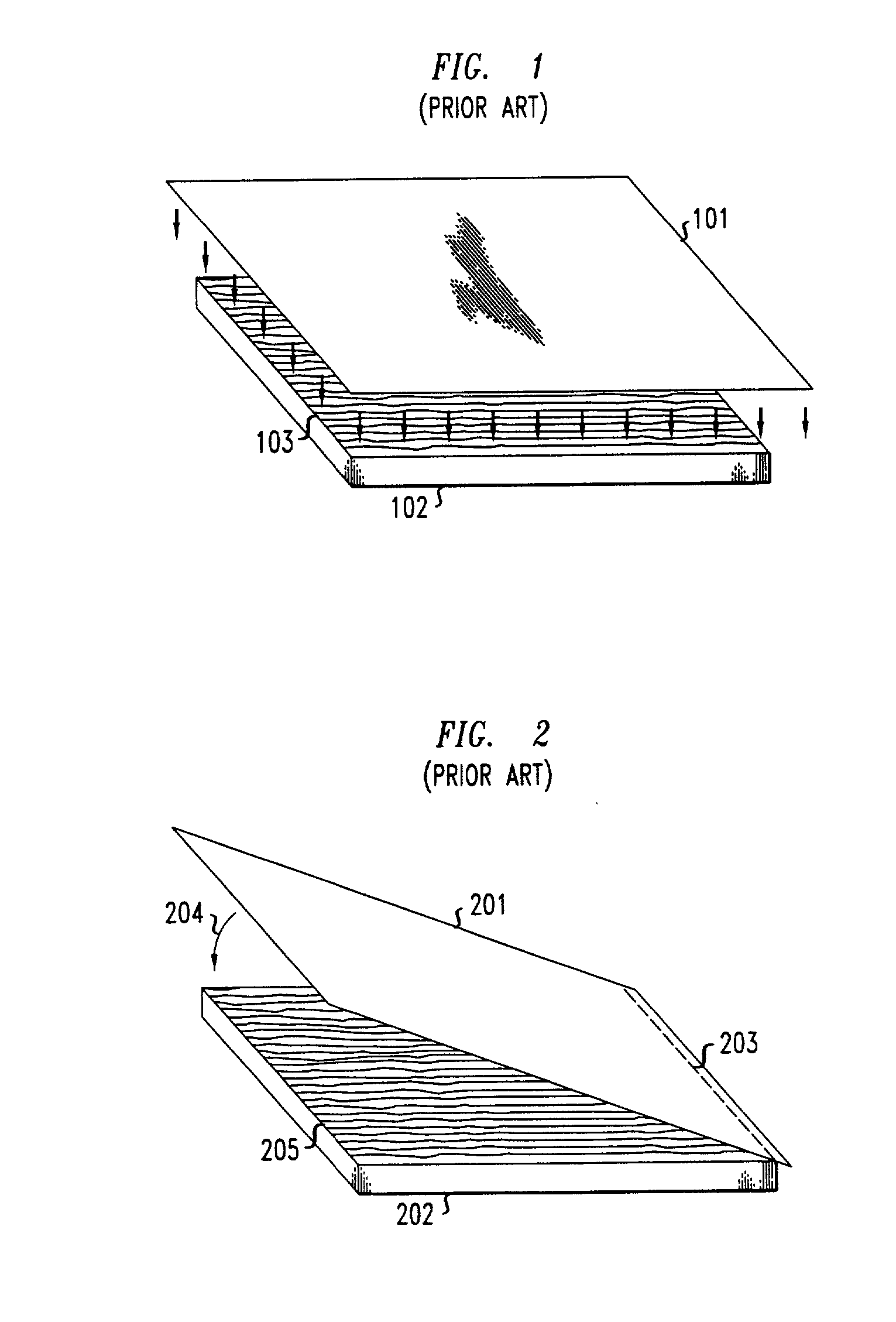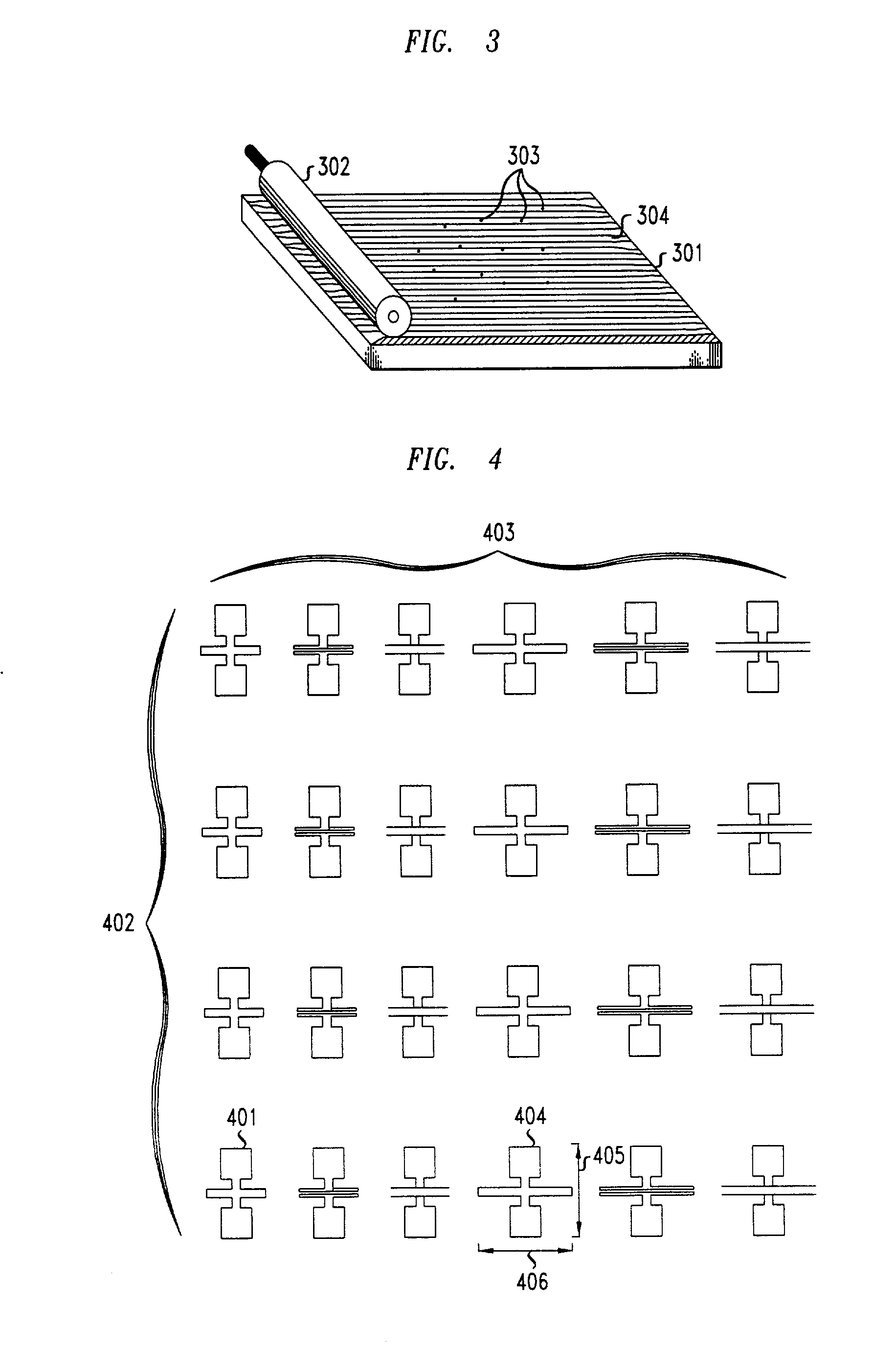Method for removing unwanted particles from a surface used in the process of flexibly transferring a feature pattern from an inked surface to a substrate
- Summary
- Abstract
- Description
- Claims
- Application Information
AI Technical Summary
Benefits of technology
Problems solved by technology
Method used
Image
Examples
Embodiment Construction
[0018] FIG. 3 shows an embodiment in accordance with the present invention wherein, prior to transferring ink from the feature pattern 304 on stamp 303 to the substrate 301, dust 303 is removed from the stamp. To remove the dust from feature pattern 304, roller 302 is rolled over stamp 301. Roller 302 is, for example, an adhesive-tape lint remover. However, any adhesive surface that can remove dust and other particles in a similar manner is suitable. Dust 303 adheres to the surface of the roller 302 and is thus removed from stamp 301. A similar procedure can be used to remove dust particles from the substrate.
[0019] Feature pattern 304 is illustrated for simplicity as a series of regularly spaced parallel features. However, feature patterns of various complexities may also be used. Features on the feature pattern, as used herein, are defined as those individual elements of the feature pattern that are intended to be transferred to the substrate and result in a functional part of the...
PUM
 Login to View More
Login to View More Abstract
Description
Claims
Application Information
 Login to View More
Login to View More - R&D
- Intellectual Property
- Life Sciences
- Materials
- Tech Scout
- Unparalleled Data Quality
- Higher Quality Content
- 60% Fewer Hallucinations
Browse by: Latest US Patents, China's latest patents, Technical Efficacy Thesaurus, Application Domain, Technology Topic, Popular Technical Reports.
© 2025 PatSnap. All rights reserved.Legal|Privacy policy|Modern Slavery Act Transparency Statement|Sitemap|About US| Contact US: help@patsnap.com



